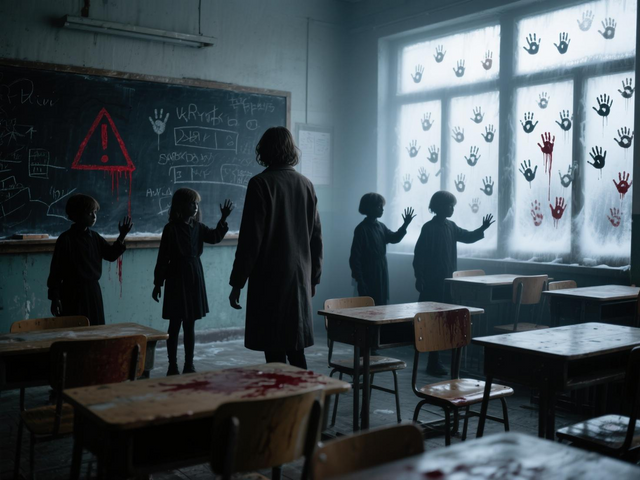The Forgotten Orphanage
The wind howled through the broken windows of St. Agatha’s Orphanage, carrying with it the faint echoes of children’s laughter—too high-pitched, too hollow to be real. Mia, a paranormal investigator, stepped over the rusted gate, her camera strap digging into her shoulder. The building loomed ahead, its brick walls stained with dampness, a faded sign reading “Closed 1967” swinging gently in the breeze.
Inside, the air smelled of mold and disinfectant, memories of long-forgotten cries clinging to the peeling walls. Mia’s flashlight swept over cracked floor tiles and empty iron cribs, their mattresses torn and moth-eaten. On the second floor, she paused at a mural of smiling children, their eyes painted in eerie detail—followed her as she moved. A door slammed shut downstairs, making her jump.
“Hello?” she called, voice trembling. The laughter returned, now mixed with whispers. She followed the sound to a narrow corridor lined with tiny handprints in faded paint. At the end, a door stood ajar, light flickering inside. Mia pushed it open to find a classroom frozen in time: wooden desks, tattered textbooks, and a blackboard covered in math equations… and a single sentence written in fresh chalk: “You shouldn’t have come.”
The door slammed behind her. The room grew colder, and the mural children’s laughter morphed into sobs. Mia turned to see shadowy figures materializing at the desks—children in tattered uniforms, their faces featureless except for glowing, tear-streaked eyes. One stood up, extending a hand that dripped with what looked like ink. “Stay with us,” a chorus of voices whispered, echoing from all sides.
Mia ran, but the corridor twisted, each turn leading to more identical hallways. The handprints on the walls began to move, closing in on her. She stumbled into a courtyard she hadn’t seen before, where a circle of stone markers stood, each engraved with a name and the date “1967—No one left.” The ground beneath her trembled as tiny hands grabbed her ankles, pulling her toward the markers. The last thing she heard was the laughter turning to a triumphant shriek: “You’re one of us now.”
When dawn broke, St. Agatha’s was silent again. Mia’s camera lay abandoned in the classroom, its last photo showing a group of ghostly children surrounding a figure that looked just like her—smiling, but with eyes as empty as the orphanage itself.
